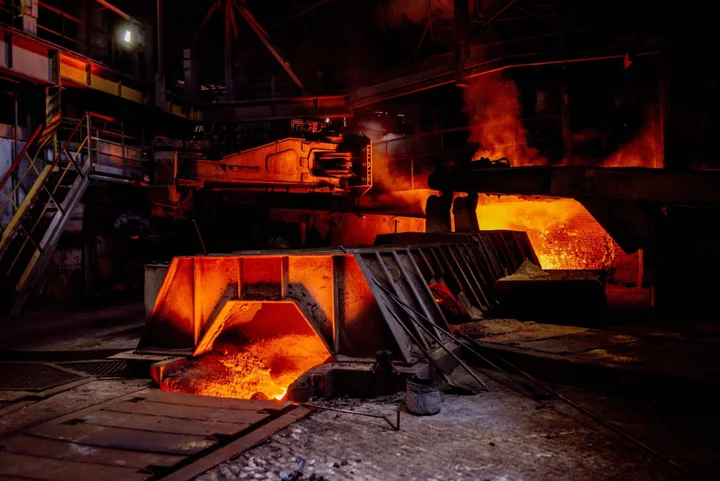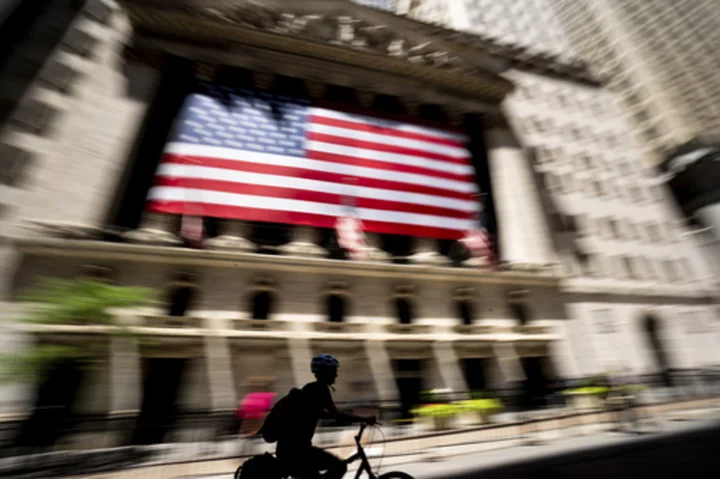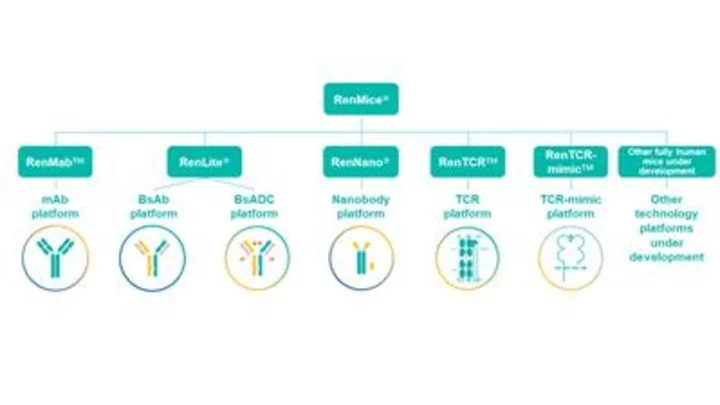Artificial intelligence is now on the agenda as world leaders, climate diplomats and thousands of others descend on Dubai for the United Nations climate summit. Boosters of machine learning are pitching it as tool for unlocking enormous cuts to emissions.
Some of the hardest to decarbonize sectors like cement and steel could particularly stand to benefit, according to a new report from the Innovation for Cool Earth Forum, an international climate forum organized by the government of Japan. The final version of the report will be presented at the COP28 climate talks that begin Thursday.
The industrial sector is responsible for about a third of global carbon emissions, but machine learning models can potentially help lower its climate toll. By determining the optimal amount of raw materials required to create things like steel and cement, it’s possible to lower materials usage and corresponding emissions while also keeping quality up, said Alp Kucukelbir, co-founder and chief scientist at AI company Fero Labs, who co-authored the report.
The steel industry is already putting AI to work to do just that. In Brazil, steelmaker Gerdau used Fero Labs’ machine learning models to improve efficiency at its plants. Gerdau was able to save $3 per ton while also reducing its emissions footprint by about 8%, according to the report. (For context, the current price of steel is around $900 per ton.)
“This is the advantage of using software to mitigate climate change: the impact is immediate,” he said.
The machine learning model helped the company calculate how it could increase recycled feedstock and decrease the amount of materials needed to keep quality consistent, ultimately eliminating the need to mine and refine 500,000 pounds of raw material annually.
AI could also be applied in an industrial setting to avoiding past mistakes by leveraging historical data, rapidly addressing production issues and minimizing energy consumption, report authors wrote.
The technology can also be used to develop new materials that are key to the energy transition like battery anodes and solar photovoltaics.
New materials typically get developed using a trial and error approach, with repeated experimentation until something clicks. AI can help reduce the time it takes to develop materials from months to weeks. By combining an early-prediction model that reduced the amount of time per experiment with an algorithm that reduced the number of experiments, one study on maximizing battery lifetime was able to reduce the time it took to identify charging techniques that are fast while minimizing battery degradation from over 500 days to 16 days.
Despite the technology’s promise to lower emissions, AI also poses a climate risk thanks to its copious energy demands. Researchers have found that training a single AI-powered model can consume more electricity than 100 US homes use in an entire year. But lack of transparency and the industry’s rapid growth have made it difficult to determine exactly how much energy AI is consuming.
AI can also be wielded to extend the life of fossil fuels. Oil companies are already using machine learning technology to predict the most productive places to drill at a time when research points to the need to wind down the use of fossil fuels. A recent EY survey found that more than 92% of oil and gas companies are either investing in or planning on investing in AI in the next two years.
In November, Microsoft Corp. published a paper on accelerating sustainability solutions with AI, which addressed the energy issue. “As the infrastructure needed to support AI models expands, demand for resources such as energy and water will rise,” the authors wrote.
“One of the things that we are looking at within this paper is really understanding where the energy consumption is coming from,” Chief Sustainability Officer Melanie Nakagawa said of Microsoft’s evolving understanding of AI’s energy issue.
Alongside energy consumption, safety is another risk to consider when it comes to applying AI to climate problems. AI models can get things wrong, with one study finding inaccuracies in over half of ChatGPT’s answers to questions.
While it might not always be possible to eliminate the risk of inaccuracy or uncertainty, it’s important that AI tools quantify and communicate uncertainty so that users can respond appropriately, according to Juliet Rothenberg, research group product manager of climate AI at Alphabet Inc.’s Google. Other human backstops can be helpful in mitigating risk, as well, such as having a person look at an AI-produced output, she said.
She said the company’s project focused on traffic light optimization shows one path forward. Google’s AI technology analyzed traffic patterns in cities and provided recommendations to planners on how to position stop lights in a bid to reduce idling and excess carbon emissions. Ultimately, traffic engineers had the final say in whether to take the recommendations or not.
“Having that human and contextual awareness and partnering really closely with stakeholders is something that we believe is very important,” Rothenberg said.









